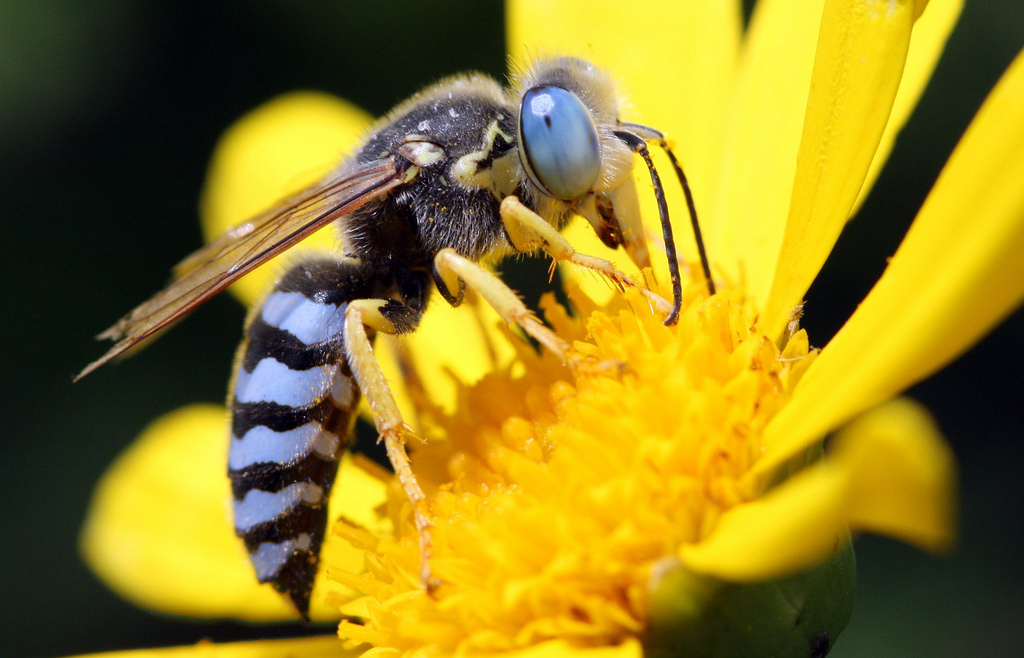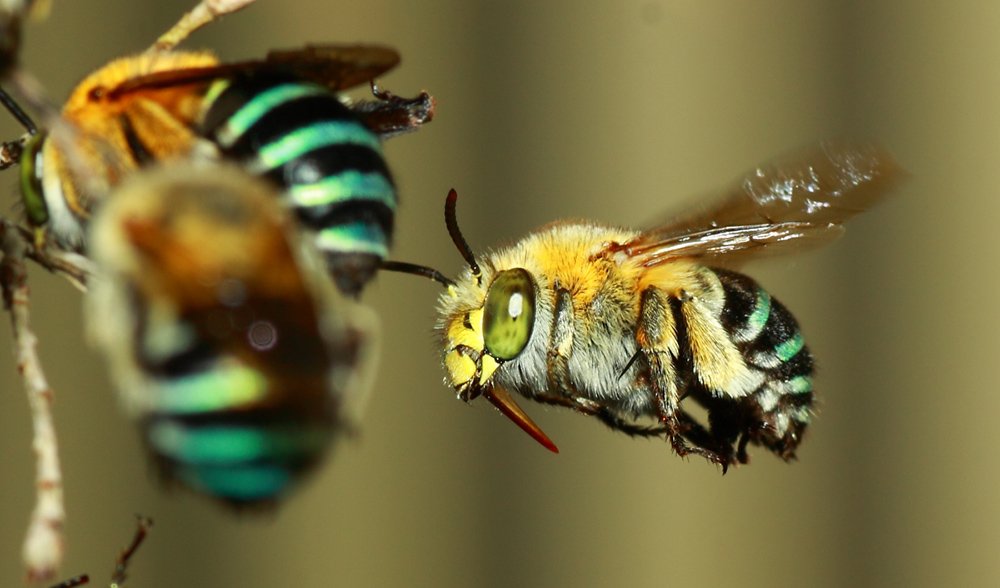

Instead, they may burrow so far into the wood, then turn to a right angle and continue boring a hole parallel to the surface of the wood. The Blue Carpenter Bee does not build nests like other bees such as the honey bee. Hence why the female will endeavor to look for existing homes as opposed to exhuming new ones.Ĭoarse sawdust might be available underneath the opening, and burrowing sounds are now and then heard inside the wood. Digging Galleries is a laborious process that takes a great deal of time and vitality. The passageway openings in the wood surface are called ‘Galleries’ which are exactly round and about the measurement of your little finger. The male bee plays no further part in the raising of the young bees. Once mating has taken place, the fertilized female blue carpenter bee will search for a suitable hole in any natural wood or will look to drill into the wood in order to make a passage to lay her eggs.

Males are often different from females in color, they often have greenish-yellow fur on them – instead of blue.īlue carpenter bee anatomy and coloring Habitat and Nestingīlue Bees hibernate undercover through the winter and mate the accompanying spring. Their beautiful wings are long and narrow in shape. They have larger mouthparts than most other bee species. The sides of the belly and first stomach sections are additionally covered by hairs too, though a much finer and more slender layer of blue hairs. The thorax part of a blue bee is covered with dense almost glossy light blue hairs, giving it it’s striking blue shading. The back end of their body is clear, black and shiny, without any hairs. These can resemble bumble bees but have more distinct body parts. They can reach a normal size of 23 millimeters (0.91 in). Xylocopa the first name represents its genus and caerulea represents its species. The scientific name of Blue Carpenter Bee is Xylocopa caerulea. Xylocopa caerulea is part of a large insect group. The blue carpenter bee is found all through Southeast Asia, India, and China, through to Indonesia, here’s a map showing the approximate distribution of the Blue Carpenter Bee.īlue bee location map Blue bee classification It can be difficult for amateurs to spot the differences between bumblebees and carpenter bees, we hope the images lower down help. Carpenter bees are also known as mining bees or boring wood bees.īlue Carpenter Bees are known for being large and overwhelming bees. Particular wood types include redwood, cedar, cypress, and pine.īlue Carpenter Bees can make a hole up to around 1.5-inch in diameter in wood.

Carpenter bees prefer unpainted, seasoned wood. These can be blue, green or purple in color. More often than not any bees you see in woodwork are Carpenter Bees, which were named after their habit of digging holes in wood areas to rear their young. People usually observe large bees of different types and colors lingering around your doors, flowerpots, gardens, and backyards. Their habitat, feeding habits, behavior, life cycle and other aspects of the Blue Carpenter Bee. There never seems to be enough blue animals in nature, so as bees are a passion of ours, so we want to tell you all about the blue carpenter bee.


 0 kommentar(er)
0 kommentar(er)
